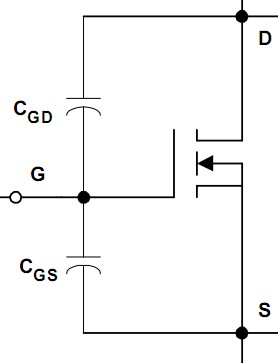Follow along with the video below to see how to install our site as a web app on your home screen.
Note: This feature may not be available in some browsers.




How can we determine that a mosfet gate draws how much current and choose a proper mosfet driver?





2. When the Vds of the MOSfet starts to change (the beginning of the switching), you need to change the voltage on the Cgd capacitance from about the Vds to -Vth. This because Vds = Vdg + Vgs (the voltage on Cgs + the voltage on Cgd = Vds)
The rate Vds going down ONLY depends on how fast you can discharge the Cgd-capacitor! This energy (current) comes entirely from your gate drive circuit, so the more current you supply to the gate, the faster Cgd discharges, the faster Vds goes down, and the faster the switching takes place.


The gate current requirement is ESTABLISHED by the designer, based on the required switching speed, since the switching action happens during the "plateau" region of the gate voltage. To shorten this time, you must drive the gate with higher current. The gate charge associated with this region is Qgd, due to the MIller effect. You supply this charge by injecting a current into the gate. The switching time is then tsw=Qgd/Ig. Thus, you choose Ig based on the desired switching time tsw and the MOSFET's Qgd.
The switching time is selected based on the the switching frequency and the allowable switching losses.
Now the gate of the MOSFET behaves as a (variable) capacitor. Therefore, the current Ig can only be limited by the driver's resistance or an external resistance. You select that resistor (if external) such that
Ig=(Vgmax-Vplateau)/Rg
where Vgmax is the maximum gate drive voltage you apply and Vplateau is calculated from the MOSFET datasheet for the actual drain current.
Based on the info above, you select a suitable gate driver (with a peak current at least equal to Ig) and an external resistor Rg to limit that current (if needed).
For more info, see application note U-118 from Unitrode (now TI). https://focus.ti.com/docs/apps/catalog/resources/appnoteabstract.jhtml?abstractName=slua054
The average gate drive requirement (yes, you will need power to drive the MOSFET) is calculated based on the total gate charge of the MOSFET and the maximum applied gate voltage, as well as the switching frequency. That is because the energy you deliver to the gate capacitance when you turn on the MOSFET is actually lost when you turn it off. The net effect is a power loss, commonly referred to as gate drive loss.
If you need more info, please post.